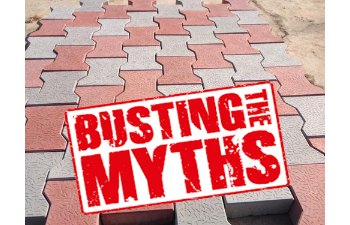
Blog

Busting Myths about Concrete Paving Blocks

Busting myths about paving blocks.
Over the years a lot of negativity has been spread by falsely informed environmentalists about the negative aspects of concrete and associate products. Some claim inaccurately that concrete absorbs more heat than regular “natural building products while others claim that they are bad for the environment. Naturally, some of this blame has fallen on the shoulders of concrete paver blocks as well. We at Usha Rubbers have decided to set the record straight once and for all. Here are a few myths about concrete paving blocks busted.
1. Heat Absorption
Concrete Paving blocks, especially the ones manufactured using Rubber moulds by Usha Rubbers, the global leader in wet cast concrete paving blocks, absorb heat the same way natural stone does. While there are cooler alternates for flooring like mud and dung, they do not have any load bearing capacity and wetter regions always pose the risk of dirtying your driveway or patio rather than beautifying it.
2. Cost to the Environment
Concrete paving blocks do not incur any additional cost to the environment than the process of cutting and shaping natural rocks. They consume the same amount of energy to manufacture and have similar carbon foot prints. However, please note that while cheaper, inferior competitors try their best to market harmfully produced rubber and plastic moulds for concrete paver blocks, the wet cast concrete product moulds by Usha Rubbers are made with 100% virgin materials.
3. Water absorption.
A common myth is that concrete paver blocks do not let water get absorbed into the soil and affects the water table level. This is by far the stupidest myth on this list. It is interesting to note that natural alternatives such as mud, dung or stone only allow water absorption of a measly 20%. The rest of the water is evaporated due to increasing global temperatures. However, concrete paver bocks manufactured with Atom Plastic Moulds for Concrete paving tills and landscaping bricks aid water absorption by design. They come with water channels that seeps water into the gravel bed below, holding it until it is absorbed, resulting in water absorption of 70%.

